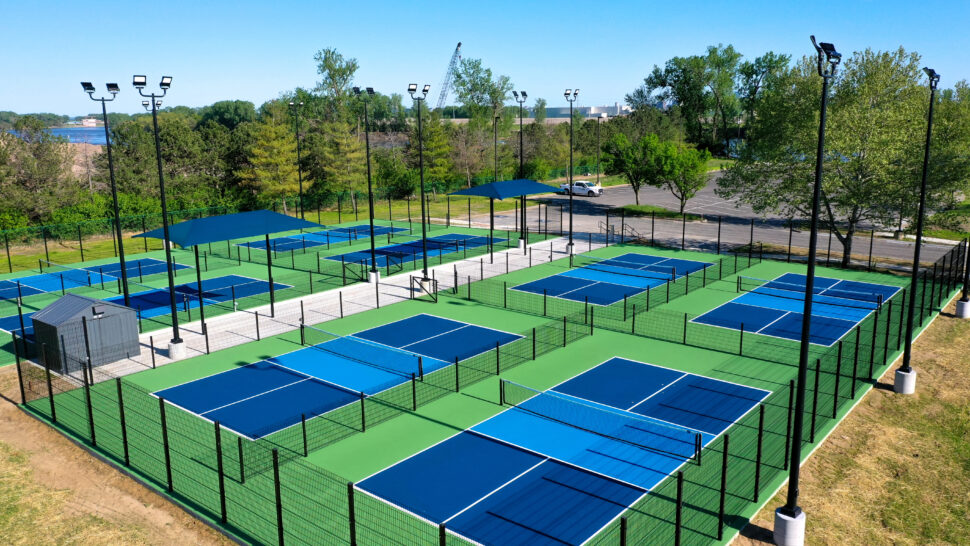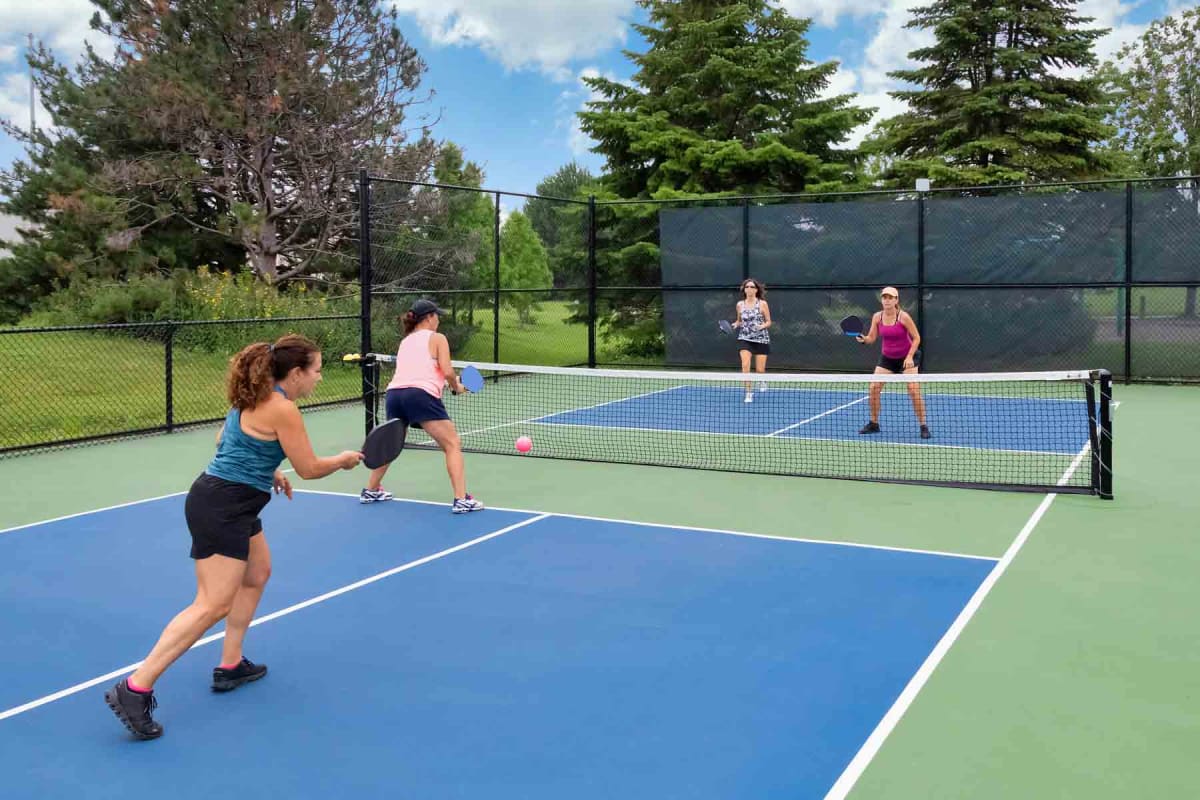Benefits of Professional Assistance in Your Pickleball Court Construction Journey
Benefits of Professional Assistance in Your Pickleball Court Construction Journey
Blog Article
Navigating Regulations for Pickleball Court Building in Your Location
Building a pickleball court in your location requires a nuanced understanding of various local guidelines, including zoning regulations, structure permits, and safety and security standards. Each district imposes details guidelines that can considerably affect the expediency of your project. Engaging with local authorities and the neighborhood is critical for making sure compliance and cultivating support. Browsing this regulative landscape can be complex and taxing. What are the vital steps you should think about to stay clear of possible challenges and guarantee a smooth building procedure?
Comprehending Local Zoning Legislations
When considering the building of a pickleball court, understanding local zoning regulations is crucial to making certain conformity and preventing possible lawful concerns. Zoning policies determine just how land can be made use of and usually include requirements pertaining to recreational centers. These legislations can differ significantly by community, influencing variables such as court placement, sound, illumination, and size degrees.
Before starting building and construction, it is necessary to seek advice from the neighborhood zoning board or preparation department to ascertain the certain laws that relate to your property. Particular zones might restrict entertainment activities, while others might require specific permits or adherence to specific guidelines. It is also vital to take into consideration problems, which establish just how far structures must be from home lines or other structures.
Furthermore, exclusive advancements, such as home owner associations (HOAs), might enforce their own rules relating to the building and construction and use pickleball courts. Recognizing these guidelines can prevent expensive adjustments or litigation down the line. Engaging with regional stakeholders and community members can offer important understandings and foster support for your project, ensuring that it lines up with the area's requirements and expectations.
Acquiring Necessary Structure Allows
How does one navigate the intricacies of obtaining necessary structure licenses for a pickleball court? Generally, you will certainly require to send a thorough site strategy that outlines the proposed court measurements, materials, and layout.

When licenses are gotten, it is crucial to abide by any assessment timetables and needs throughout the building and construction stage. Maintaining interaction with local authorities will certainly promote a smoother authorization procedure and assistance stay clear of potential obstacles. By completely preparing and understanding the permitting landscape, you can efficiently navigate the complexities associated with creating a pickleball court while continuing to be compliant with all neighborhood laws.

Assessing Environmental Effect
An extensive evaluation of ecological influence is important when planning the building and construction of a pickleball court. This analysis assists determine potential effects on local ecological communities, water sources, and community aesthetics. Trick factors to consider consist of website selection-- ensuring that the court is not improved ecologically sensitive land, such as wetlands or habitats for endangered varieties
Dirt security and drainage patterns need to be evaluated to avoid disintegration and water merging, which might negatively impact bordering greenery and wild animals. In addition, the selection of products is critical; choosing for sustainable and environment-friendly choices reduces ecological injury.
The implementation of efficient stormwater management techniques is another essential element, as it assists reduce runoff and sedimentation. Involving with regional environmental companies can supply important understandings into regulations and ideal techniques specific to your area.
Finally, community input can be beneficial in recognizing any regional ecological issues and promoting assistance for the task. By carrying out a detailed ecological effect assessment, stakeholders can make sure that pickleball court building and construction find this aligns with lasting practices and contributes favorably to the neighborhood's eco-friendly health.
Following Security Specifications
Making sure conformity with safety and security requirements is important for the successful building and construction and procedure of a pickleball court. Abiding by well-known security policies lessens the threat of mishaps and injuries, ensuring a safe setting for players.
Secret safety standards include appropriate court dimensions, surface materials, and illumination requirements. The court needs to meet the official dimensions of 20 feet broad by 44 feet long for increases play, with ideal barrier zones to prevent injuries from wayward balls. Pickleball court construction. The surface area needs to be built from non-slip materials to improve traction and reduce the likelihood of falls
In addition, illumination has to be adequate for evening play, offering uniform illumination to avoid darkness that can prevent exposure. Local building regulations may additionally dictate specific demands for secure fencing and net elevation to make certain gamer safety and avoid unauthorized access to the court location.
Normal examinations and maintenance are necessary to promote these criteria with time. By focusing on security conformity, court proprietors not just safeguard players yet also promote a positive online reputation within the area. This commitment to safety can urge greater participation and satisfaction of the sporting activity, inevitably adding to its growth and sustainability.

Involving the Area in Preparation
Neighborhood involvement in the drawing board of pickleball court construction can considerably boost the task's overall success. Engaging local homeowners and stakeholders fosters a feeling of ownership and motivates collaborative decision-making, which can bring about more comprehensive assistance for the initiative.
To effectively involve the area, organizers must start public meetings or workshops, providing a system for residents to voice their point of views and preferences pertaining to area, style, and amenities. Studies and feedback forms can likewise be utilized to gather understandings from a larger audience, ensuring that varied viewpoints are thought about.
Furthermore, forming a neighborhood advising board can help with continuous discussions and address issues throughout the planning procedure. This board can consist of representatives from numerous demographics, such as neighborhood schools, leisure organizations, and neighborhood watch, consequently enhancing area representation.
Effective interaction is essential; updates about the job need to be on a regular basis shared using newsletters, social media sites, or regional notices. By focusing on area interaction, organizers can cultivate excitement, link reduce possible resistance, and create a pickleball center that truly resonates with local worths and requirements. This joint approach not only enriches the job however also enhances neighborhood ties.
Verdict
In conclusion, browsing the complexities of pickleball court construction requires a detailed understanding of regional guidelines, consisting of zoning legislations, structure licenses, and safety standards. By sticking to these standards and cultivating cooperation, successful application of pickleball courts can be accomplished, promoting leisure chances and community wellness.
Building a pickleball court in your area needs a nuanced understanding of different regional policies, consisting of zoning legislations, structure permits, and safety standards.When thinking about the building of a pickleball court, recognizing neighborhood zoning laws is critical to guaranteeing compliance and avoiding possible lawful issues. By completely preparing and understanding the allowing landscape, you can efficiently navigate the intricacies included in creating a pickleball court while remaining compliant with all local laws.
In conclusion, navigating the intricacies of pickleball court construction necessitates a detailed understanding of neighborhood laws, including zoning legislations, structure permits, and safety requirements. By you can try these out adhering to these standards and cultivating cooperation, effective execution of pickleball courts can be achieved, advertising recreational possibilities and community well-being.
Report this page